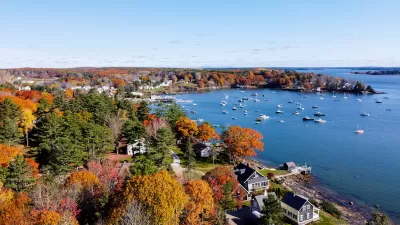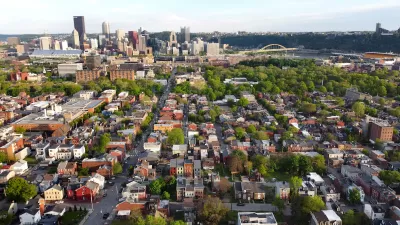Changes in state law that rolls back regulations on septic systems could spark more residential sprawl in Maryland's rural areas.

The Maryland Department of the Environment has removed a requirement for nitrogen removing septic systems except when located next to bodies of water. As Tom Horton of the Bay Journal News Service writes, this change has the potential to generate new rural sprawl development by making development cheaper.
In 2012, Maryland Governor Martin O'Malley passed a law that limited development on primarily agricultural and forest lands and instituted a requirement that new septic systems remove nitrogens, which Horton writes made development more expensive, but also less polluting. The benefit had been to add another barrier to residential development in sensitive areas.
The ties between septic tanks and the countryside are widely underappreciated. State health laws have long served as a crude substitute for more protective rural zoning, which bars development on significant acreages where soils were too soggy, too sloped, too rocky to pass “percolation” tests required to site septic tanks.
“Without septic, you don’t have sprawl,” said Richard Hall, who was Maryland’s secretary of planning for eight years under Gov. Martin O’Malley, Hogan’s predecessor.
The repeal of the septic requirements by current Governor Larry Hogan open the way for what Horton describes as a "backsliding," with areas previously open to limited development now once again viable for sprawl development.
FULL STORY: Smart growth down the drain in Maryland

Alabama: Trump Terminates Settlements for Black Communities Harmed By Raw Sewage
Trump deemed the landmark civil rights agreement “illegal DEI and environmental justice policy.”

Planetizen Federal Action Tracker
A weekly monitor of how Trump’s orders and actions are impacting planners and planning in America.

The 120 Year Old Tiny Home Villages That Sheltered San Francisco’s Earthquake Refugees
More than a century ago, San Francisco mobilized to house thousands of residents displaced by the 1906 earthquake. Could their strategy offer a model for the present?

Ken Jennings Launches Transit Web Series
The Jeopardy champ wants you to ride public transit.

BLM To Rescind Public Lands Rule
The change will downgrade conservation, once again putting federal land at risk for mining and other extractive uses.

Indy Neighborhood Group Builds Temporary Multi-Use Path
Community members, aided in part by funding from the city, repurposed a vehicle lane to create a protected bike and pedestrian path for the summer season.
Urban Design for Planners 1: Software Tools
This six-course series explores essential urban design concepts using open source software and equips planners with the tools they need to participate fully in the urban design process.
Planning for Universal Design
Learn the tools for implementing Universal Design in planning regulations.
Clanton & Associates, Inc.
Jessamine County Fiscal Court
Institute for Housing and Urban Development Studies (IHS)
City of Grandview
Harvard GSD Executive Education
Toledo-Lucas County Plan Commissions
Salt Lake City
NYU Wagner Graduate School of Public Service





























